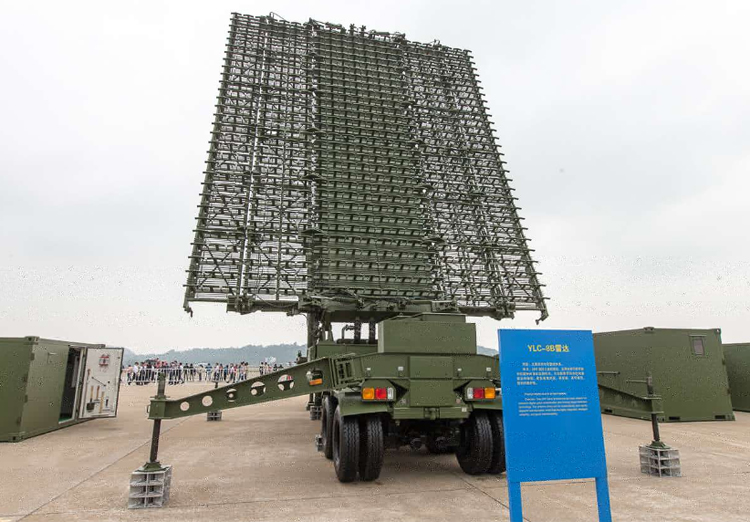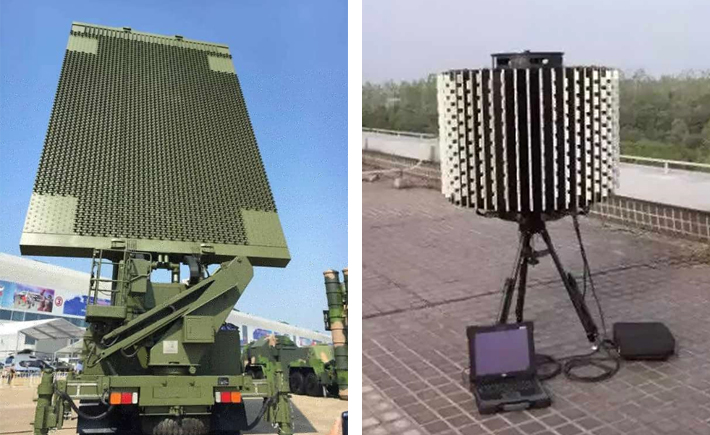INDIAN ARMED FORCES CHIEFS ON OUR RELENTLESS AND FOCUSED PUBLISHING EFFORTS

The insightful articles, inspiring narrations and analytical perspectives presented by the Editorial Team, establish an alluring connect with the reader. My compliments and best wishes to SP Guide Publications.

"Over the past 60 years, the growth of SP Guide Publications has mirrored the rising stature of Indian Navy. Its well-researched and informative magazines on Defence and Aerospace sector have served to shape an educated opinion of our military personnel, policy makers and the public alike. I wish SP's Publication team continued success, fair winds and following seas in all future endeavour!"

Since, its inception in 1964, SP Guide Publications has consistently demonstrated commitment to high-quality journalism in the aerospace and defence sectors, earning a well-deserved reputation as Asia's largest media house in this domain. I wish SP Guide Publications continued success in its pursuit of excellence.
- Prime Minister Modi Visits Punjab’s Adampur Air Base, Interacts with Airmen after Successful ‘Operation Sindoor’; Stern Message to Pakistan
- The layered Air Defence systems that worked superbly, the key element of Operation Sindoor
- Operation Sindoor | Day 2 DGMOs Briefing
- Operation Sindoor: Resolute yet Restrained
- India's Operation Sindoor Sends a Clear Message to Terror and the World – ‘ZERO TOLERANCE’
- Japan and India set forth a defence cooperation consultancy framework, talks on tank and jet engines
China's Anti-Stealth Radar
The radar was touted to be revolutionary technology which is a significant addition to the People's Liberation Army (PLA) anti-stealth capabilities and is seen as a major challenge for America's highly advanced F-35 and F-22 fighter jets
 |
The Author is Former Director General of Information Systems and A Special Forces Veteran, Indian Army |

Media reports of September 9, 2021 revealed that China had deployed anti-stealth radars to track F-35C aircraft deployed on the US nuclear powered aircraft carrier USS ‘Carl Vinson’ then in the South China Sea (SCS). This was the sixth time a US aircraft carrier entered the SCS during 2021. The F-35Cs are to eventually replace F/A-18 jets which presently are mainstay of the US Navy’s carrier fleet.
The anti-stealth radar in the instant case is reportedly the YLC-8E that China showcased at the 13th China International Aviation and Aerospace Exhibition, or ‘Air-Show China 2021’; a six-day event that began on September 28, 2021 in Zhuhai, South China's Guangdong Province. The radar was touted to be revolutionary technology which is a significant addition to the People’s Liberation Army (PLA) anti-stealth capabilities. The development is seen as a major challenge for America’s highly advanced F-35 and F-22 fighter jets.
SLC-7 L-band 3D surveillance radar system can track stealth aircraft, helicopters, drones, cruise missiles, near-space targets, and artillery shells and rockets, and can detect and track multiple targets simultaneously, withstand saturation attacks, adapt to jamming, and rapidly identify targets
Earlier in April 2021, China had displayed the SLC-7 L-band 3D surveillance radar system, the YLC-8E UHF-band 3D surveillance radar system as well as anti-drone radars like the YLC-48 portable multipurpose reconnaissance radar at the Ninth World Radar Expo in Nanjing. These radars are already deployed by China with the YLC-8E tracking the US stealth aircraft.

The China Electronics Technology Group Co (CETC) issued a statement during the expo saying the SLC-7 L-band 3D surveillance radar system can track stealth aircraft, helicopters, drones, cruise missiles, near-space targets, and artillery shells and rockets, and that the SLC-7 can detect and track multiple targets simultaneously, withstand saturation attacks, adapt to jamming, and rapidly identify targets. The statement also said the radar has a long range but did not specify what range the radar has.
Former Google CEO and current Chair of the National Security Commission on Artificial Intelligence, Eric Schmidt urged the US lawmakers to ramp up funding for research and development in the artificial intelligence space in order to prevent China from becoming the biggest player in the global AI market
However, according to other sources, the YLC-8E radar can detect and track aircraft that are over 500 km away as well as missiles threats up to ranges over 700 km. The antenna foldable array is designed for automatic, rapid deployment and recovery. The YLC-8E radar operates in UHF-Band 3D long-range anti-stealth surveillance radar utilising full coherent digital pulse compression and moving target detection technology.
The CETC has claimed the following:
- Development of China's radar equipment development is on par with the most advanced level in the world.
- Development of electronic information technology and hardware technology will help develop radars to deliver higher performance and have stronger capabilities with smaller sizes. Continuous improvement of computer processing and calculation, the radar based on software technology is also expected to see a big development.
- Application of artificial intelligence (AI) technologies could significantly enhance operational efficiency of radar systems.
- The YLC-8E can detect even the most advanced stealth aircraft, as also other types of targets at long range and high definition.
- The SLC-7 can take on even more types of targets making it much more versatile than many other competing products. Earlier radar systems usually had dedicated functions but the SLC-7 radar can not only detect stealth targets but also be used for early warning and artillery reconnaissance; functioning like multiple radars operating at the same time.
- Dubbed the terminator of drones, the YLC-48 portable multifunctional reconnaissance radar has outstanding ability to detect low-altitude, small and slow targets; using the circular digital phased array system and, digital integrated circuits, the radar is small, light and mobile.
- The fire control radar on the China-Pakistan jointly developed JF-17 fighter jet is already at the most advanced level in the world.
- China's anti-stealth radar installations, the ‘Chinese Aegis’ ship-borne radar systems and the airborne radar on the KJ-2000 early warning aircraft can all rival their cutting-edge foreign counterparts.
It is well known that the Chinese government supports artificial intelligence (AI) as a strategic area supported by high-level policies with ambitious and quantifiable targets, inter-ministry coordination, government funding for research and development, support for workforce development, and suggestions for international collaboration and expansion.

Speaking to CNN in March 2021, former Google CEO and current chair of the National Security Commission on Artificial Intelligence, Eric Schmidt urgedthe US lawmakers to ramp up funding for research and development in the artificial intelligence space in order to prevent China from becoming the biggest player in the global AI market; a development Schmidt warned would spark national security and privacy concerns that could ultimately constitute a national emergency.
According to a former Pentagon chief of software, “In 10 years, China will dominate key technologies related to AI, synthetic biology and genetics. Some of the US cyber defence systems are at kindergarten level.”
Schmidt said the US may lose its lead in AI "fairly quickly" over the next decade given the Chinese government's progress on a 2017 plan to lead the global market for AI by 2030. According to him, the US is also falling behind China in additive, or 3D, manufacturing and robotics, as well as facial recognition technology and supercomputers–both of which pose risks on the national security front. In order for the US to be competitive, Schmidt suggested increasing the nation's budget for research and development in AI from $1.5 billion in 2021 to $2 billion in 2022, and then doubling it each year until it hits $32 billion in 2026.
According to a former Pentagon chief of software, “In 10 years, China will dominate key technologies related to AI, synthetic biology and genetics. Some of the US cyber defence systems are at kindergarten level.”
China’s anti-stealth radars as well as rapid advances in AI are relevant to not only India’s defence and security but to all facets of our national security. Our research and development as well as countermeasures for the China threat need to be paced up accordingly in conjunction strategic partners.





